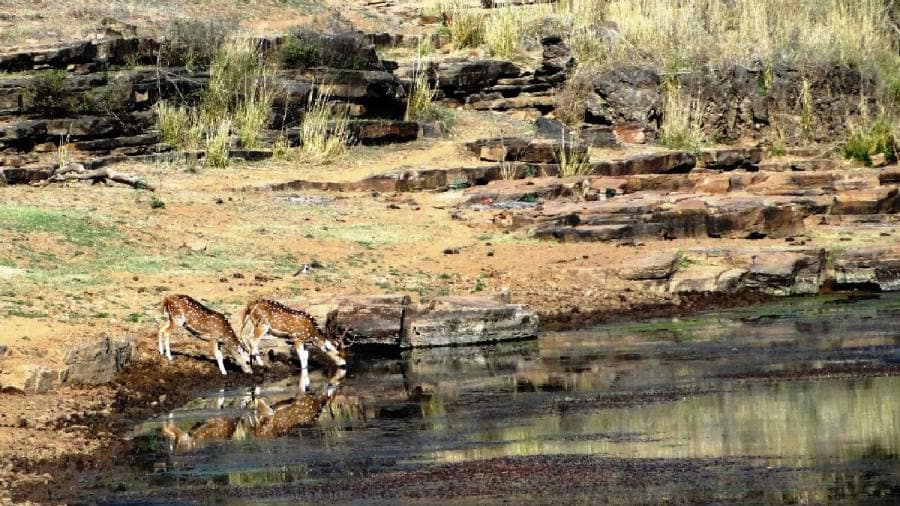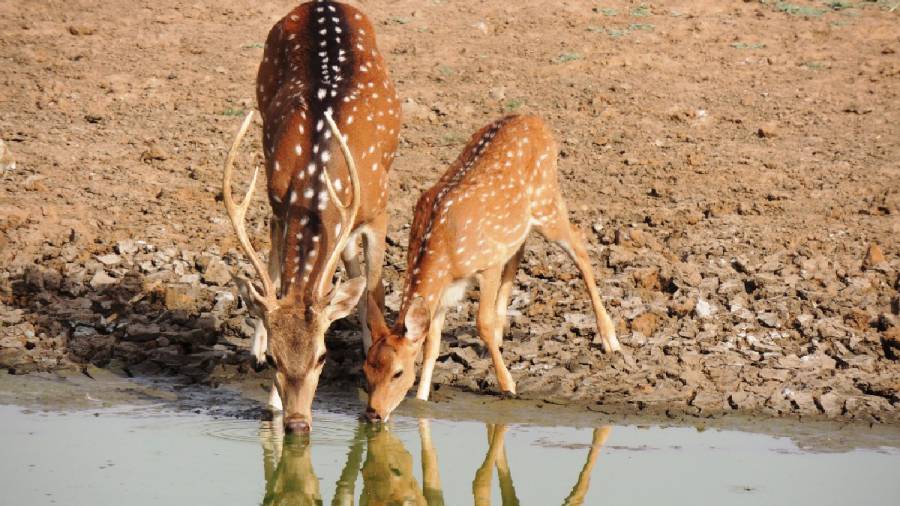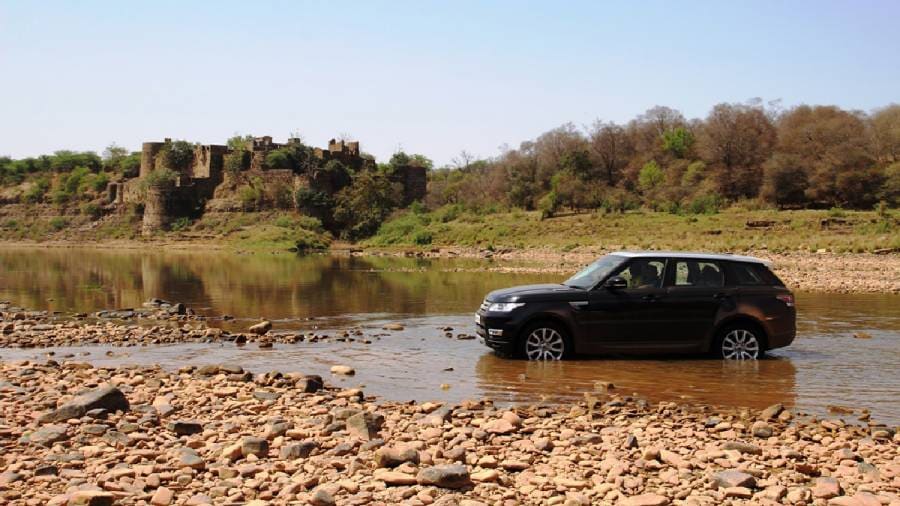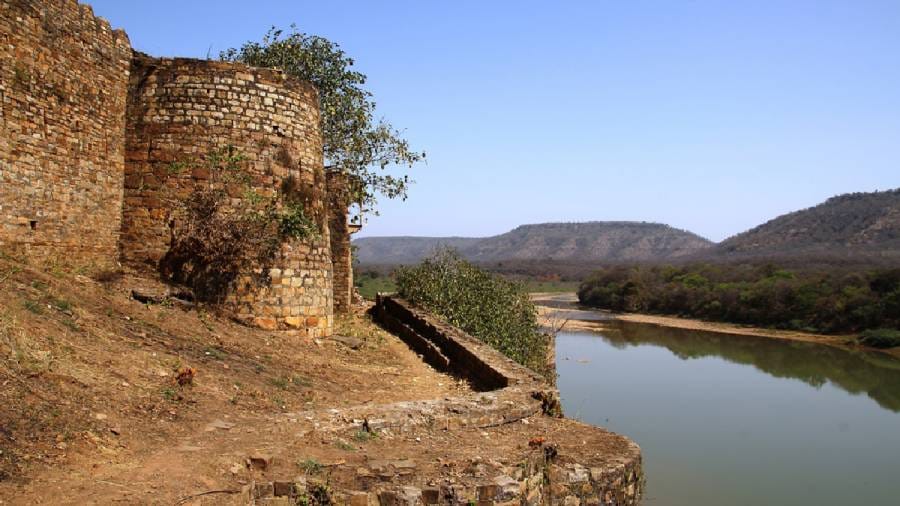African Cheetahs Arrive - In A Land Selected for Gir Lions
It is time to welcome the African cheetah to India. As you must have heard, five female and three male cheetahs from Namibia, have been brought to the Kuno National Park in Madhya Pradesh and were released in the special enclosure with electrified fence, by Prime Minister Modi on September 17th, his birthday. The cheetahs will now be in quarantine for a month, before being gradually released into the wilds of Kuno.
 Kuno was meant to be the second home for some lions from Gir. Instead, now it has got the cheetahs from Africa.
Kuno was meant to be the second home for some lions from Gir. Instead, now it has got the cheetahs from Africa.
The Indian or Asiatic cheetah was officially declared extinct in 1952 and this very ambitious project to reintroduce the cheetah into India, has been in the making for almost the last 50 years. As there are some very knowledgeable people involved, it has a chance of succeeding, but execution of the plans on the ground will be most important.
 This special plane with a tiger painting flew the eight cheetahs from Namibia to Gwalior, via Jaipur.
This special plane with a tiger painting flew the eight cheetahs from Namibia to Gwalior, via Jaipur.
What gives me hope is that the Prime Minister himself has released the cheetahs and if he continues to take interest in this project, then we do have a serious chance of seeing the world's fastest land animal that is capable of reaching speeds of 120 kmph, once again gracefully gliding in our forests and grasslands.
 The project to reintroduce cheetahs into India has finally begun. Photo by Ahmed Galal on Unsplash.
The project to reintroduce cheetahs into India has finally begun. Photo by Ahmed Galal on Unsplash.
Interestingly, the Kuno National Park (earlier known as Palpur Kuno Wildlife Sanctuary) was originally selected for the relocation of some lions from Sasan Gir, in Gujarat. The fact that the entire population of Indian Asiatic Lions lives in just one jungle, puts them at risk of in-breeding and of course the fear of a disease or an epidemic wiping out the entire population is also there.
 All such signboards are history, because the lions never arrived in Kuno, but the cheetahs have.
All such signboards are history, because the lions never arrived in Kuno, but the cheetahs have.
It was due to this that in 2013, the Supreme Court directed that some lions from Gir should be shifted to Kuno. It had also formed a committee of experts for the implementation of the order within six months. While this has not happened for various political reasons, hopefully we will now be able to give cheetahs from Africa, a new home in Central India.
 Author (third from left) with B.P. Singh Ji and some members of the Madhya Pradesh Forest Department.
Author (third from left) with B.P. Singh Ji and some members of the Madhya Pradesh Forest Department.
In 2014, I was invited to visit Kuno by B.P. Singh Ji, then the Principal Secretary, Forest and Tourism Department of Madhya Pradesh. I was accompanied by my dear friend Thakur Raghuvendra Pratap Singh of Jhalamand and we drove in a Range Rover Sport from Jaipur to Kuno, taking about six hours to cover a distance of some 350 kms. As we were invitees of the government we stayed at the Kuno Forest Rest House that is located deep in the jungle, right at the edge of a gorge through which flows the Kuno River.
 This protected area gets its name from the Kuno River.
This protected area gets its name from the Kuno River.
 The Range Rover Sport made such water crossings appear incredibly easy.
The Range Rover Sport made such water crossings appear incredibly easy.
Driving in this wild world was great fun and we went for several wildlife safaris in our Range Rover Sport and explored almost all parts of this forest area. The Kuno Wildlife Sanctuary was notified in 1981 and in 1995 the Wildlife Institute of India earmarked it as a potential site to be the second home to the Asiatic Lion. Ironically, it is the very same Wildlife Institute of India, which is now overseeing the "Cheetah Reintroduction Project".
 The Sport with its go anywhere ability, proved to be an ideal companion for this drive on the wild side.
The Sport with its go anywhere ability, proved to be an ideal companion for this drive on the wild side.
 This author is happiest when he is behind the wheel and exploring the wilderness.
This author is happiest when he is behind the wheel and exploring the wilderness.
Kuno is spread over some 350 sq km and here we saw many chinkaras or Indian gazelles, big herds of cheetals (spotted deer), large number of wild boars, some neelgai (blue bulls) and also sambar deer. The Kuno River bisects the sanctuary and this dry, deciduous forest looked beautiful even though we were there in the summer months. We also sighted a couple of jackals and lots of birds.
 Kuno has a healthy population of chinkaras, or the Indian gazelle.
Kuno has a healthy population of chinkaras, or the Indian gazelle.
 The chinkara will be the main prey for the cheetahs
The chinkara will be the main prey for the cheetahs
 In Africa the cheetah's favourite food is the Thompson's gazelle. In India it will be the chinkara.
In Africa the cheetah's favourite food is the Thompson's gazelle. In India it will be the chinkara.
Having been to Kuno, I know it has a good prey base for the cheetahs, and the chinkara or Indian gazelle that are found here in good numbers, will form the main diet of the cheetah, because even in Africa, their favourite food is the Thomson's gazelle. Kuno also has some 129 tree species, 35 mammals, 205 kinds of birds, 14 species of fish, 33 reptiles and 10 amphibians.
 Kuno is also home to cheetals or spotted deer, another good prey for the cheetah.
Kuno is also home to cheetals or spotted deer, another good prey for the cheetah.
 Wonder how they feel about the arrival of the cheetah, a predator they will encounter after a long time.
Wonder how they feel about the arrival of the cheetah, a predator they will encounter after a long time.
 Wild boar, at least the young ones, should also be a prey for the cheetah.
Wild boar, at least the young ones, should also be a prey for the cheetah.
 But the cheetah will not be able to bring down India's biggest antelope, the neelgai, or blue bull.
But the cheetah will not be able to bring down India's biggest antelope, the neelgai, or blue bull.
Carnivores like leopards and bears also reside in Kuno as do four horned deer, barking deer, jungle cat, hyena, fox, wild dogs, etc. The cheetahs will of course be at some risk from local leopards, which are the main predators in Kuno, but that is nature's way
 Kuno has a good number of leopards and in future they will surely have conflicts with the cheetah. But that is Mother Nature's way. Image courtesy forest department trap camera.
Kuno has a good number of leopards and in future they will surely have conflicts with the cheetah. But that is Mother Nature's way. Image courtesy forest department trap camera.
 About 33 reptiles, including the monitor lizard reside in Kuno.
About 33 reptiles, including the monitor lizard reside in Kuno.
In the Kuno River that is a tributary of the River Chambal, we also spotted some crocodiles. And in the thrilling night safaris we came across couple of porcupines and even had a mugger crocodile cross the road right in front of us! Everywhere we went, we were accompanied by about half a dozen armed guards- all sporting American pump action shotguns. I was told this was because some tribal people, who live on the fringes of Kuno, are regular poachers and often fight with the forest department employees.
 Wherever we went we had an armed escort.
Wherever we went we had an armed escort.
These poachers can also pose a threat to the cheetahs, and I am told the forest department has increased its staff and even got a specially trained dog squad to track down poachers. I seriously hope this works, as this region does have a gun culture with every second person carrying a weapon. If you go to Shivpuri, which is some 55km away the bazaar is full of gun shops and gunsmiths can be seen servicing shotguns by the roadside itself!
 The ancient Palpur Fortress stands on the banks of Kuno River
The ancient Palpur Fortress stands on the banks of Kuno River
And as some of you may have guessed, this region of the Chambal is also known for its dacoits, the most famous of course being the Bandit Queen Phoolan Devi. In fact, the Palpur Fortress that is situated on the banks of the Kuno River is said to have been frequented by dacoits till a few years back! When we visited this fortress, the armed guards made sure they walked ahead of us.
 The Palpur Fortress offers some great views.
The Palpur Fortress offers some great views.
The Palpur Fortress, though in ruins, has massive bastions and within it are the ruins of a palace, temple and even a court! It looks very impressive from the opposite bank of the river and our Range Rover Sport had no problem whatsoever in crossing the River Kuno to enable us to enjoy this better view.
 Kuno also hosts over 200 species of birds
Kuno also hosts over 200 species of birds
Finally let me say, now that the cheetahs have arrived in Kuno, all the signboards of lions have been removed. Wonder what will happen to the Supreme Court's order and if the "Lions of Gir" will ever get another home?
 Due to its colourful feathers, the Indian roller was once among the most killed bird species in India.
Due to its colourful feathers, the Indian roller was once among the most killed bird species in India.
Photos - Bob Rupani














